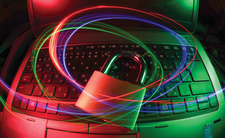Security audits with Lynis
Professional Hardening

© Photo by FLY:D on Unsplash
The complexity of modern distributions offers many potential attack vectors for malware. Lynis lets you find these vulnerabilities before an attacker does.
Virtually nobody uses a computer without Internet access. Unfortunately, the network of networks is teeming with malicious programs that exploit vulnerabilities in operating systems, firmware, and application programs looking to inject malware or steal personal data.
Sys admins protect their systems against these attacks as part of their daily grind. Home users also need to protect their systems by keeping their computers up to date and running an occasional security scan to detect any vulnerabilities. Lynis [1], a free software tool from CISOfy, covers a wide range of problem scenarios and lets you perform regular system checks in no time at all.
First Launch
Lynis, a command-line program, comes with a collection of scripts for Unix-style systems. These scripts check various vulnerable system components for insecure settings and display color-coded results.
[...]
Buy this article as PDF
(incl. VAT)
Buy Linux Magazine
Subscribe to our Linux Newsletters
Find Linux and Open Source Jobs
Subscribe to our ADMIN Newsletters
Support Our Work
Linux Magazine content is made possible with support from readers like you. Please consider contributing when you’ve found an article to be beneficial.

News
-
Say Goodbye to Middle-Mouse Paste
Both Gnome and Firefox have proposed getting rid of a long-time favorite Linux feature.
-
Manjaro 26.0 Primary Desktop Environments Default to Wayland
If you want to stick with X.Org, you'll be limited to the desktop environments you can choose.
-
Mozilla Plans to AI-ify Firefox
With a new CEO in control, Mozilla is doubling down on a strategy of trust, all the while leaning into AI.
-
Gnome Says No to AI-Generated Extensions
If you're a developer wanting to create a new Gnome extension, you'd best set aside that AI code generator, because the extension team will have none of that.
-
Parrot OS Switches to KDE Plasma Desktop
Yet another distro is making the move to the KDE Plasma desktop.
-
TUXEDO Announces Gemini 17
TUXEDO Computers has released the fourth generation of its Gemini laptop with plenty of updates.
-
Two New Distros Adopt Enlightenment
MX Moksha and AV Linux 25 join ranks with Bodhi Linux and embrace the Enlightenment desktop.
-
Solus Linux 4.8 Removes Python 2
Solus Linux 4.8 has been released with the latest Linux kernel, updated desktops, and a key removal.
-
Zorin OS 18 Hits over a Million Downloads
If you doubt Linux isn't gaining popularity, you only have to look at Zorin OS's download numbers.
-
TUXEDO Computers Scraps Snapdragon X1E-Based Laptop
Due to issues with a Snapdragon CPU, TUXEDO Computers has cancelled its plans to release a laptop based on this elite hardware.

